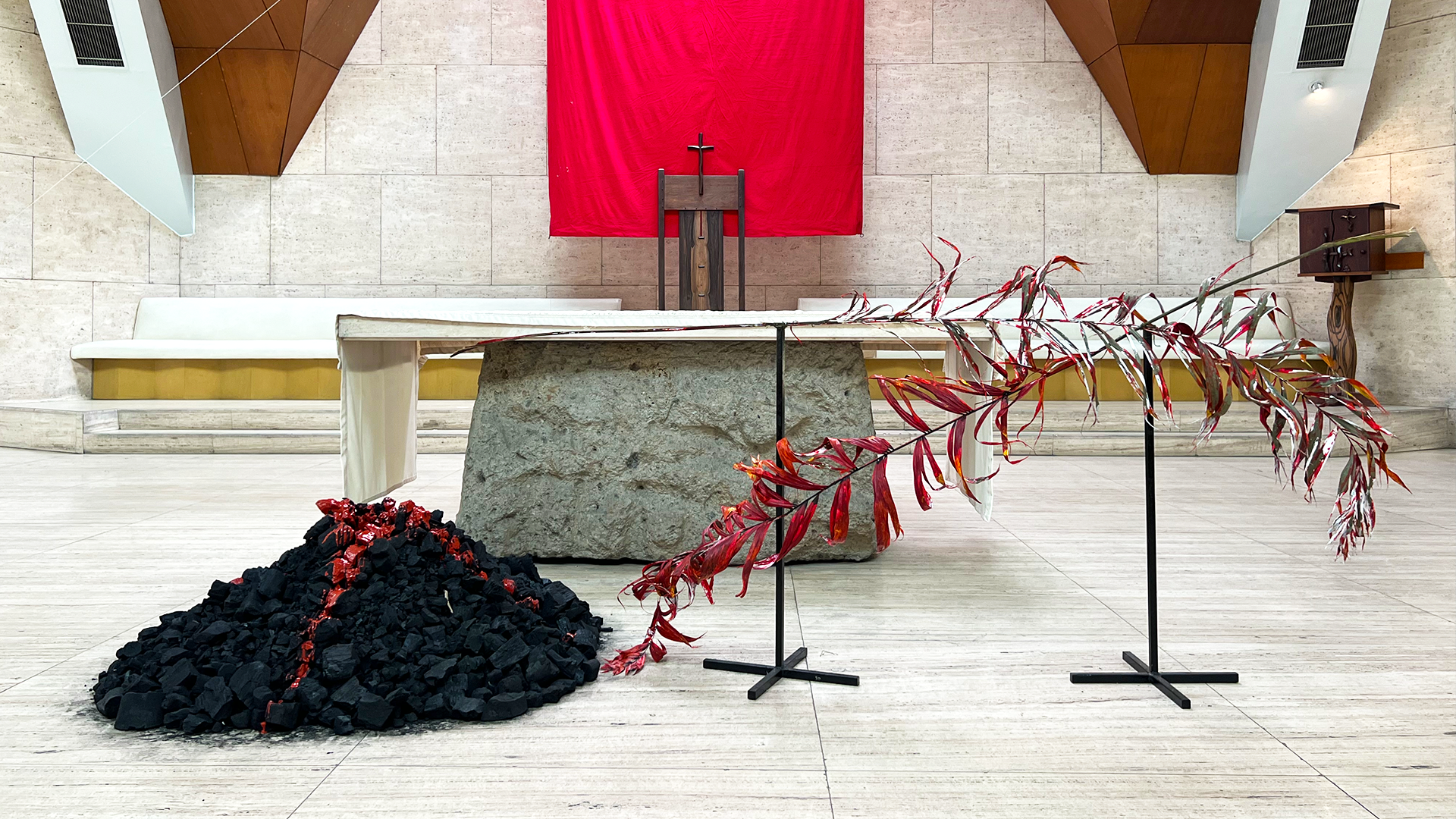Listening to the Leaves
Words John Alexis Balaguer
March 27, 2024
On a bright afternoon, two Jesuit priests strolled together, engaging in deep conversation. Fr. Rene Javellana posed a seemingly peculiar question to Fr. Jason Dy: "Can you cry over a dying leaf?" It struck Dy as unusual. How could one empathize with something so fleeting and ordinary? The question lingered, prompting him to delve into contemplation, finding resonance in listening to nature's whispers.
Fr. Jason Dy, SJ, a Jesuit priest and Filipino contemporary artist, intertwines art and spirituality in his creations. Through his work, he fosters contemplation and collaboration, often engaging with local communities to introduce pastoral care with participatory art practices. In his recent solo exhibition titled Nature is never spent (2021) and project Arrange/Enliven (2020-ongoing), Dy gathered natural elements as flower arrangements, to explore the cyclical nature of life, mortality, and humanity's profound connection to the natural world. His works commonly underscore the significance of empathy and sacrifice in confronting social issues and existential inquiries.
In his most recent project for the Holy Week, Dy incorporates natural elements, specifically a variety of palm leaves for creating positive and negative leaf-print banners, along with a pile of coal, and the palm leaf used for printing. Arranged at the sanctuary area of the Church of the Gesù, located within the Ateneo de Manila University campus, these artworks are the result of a collaborative effort between the artist and a community of devotees who gather materials, engage in live printmaking using the leaves, share the technique with others, and ultimately install the pieces at the church altar in time for the ministerial services.
Each installation reflects the progression of the liturgical calendar during Holy Week. On Ash Wednesday, "Badlis" featured black and white banners reminiscent of ash smears, accompanied by a pile of coal. These ashes, traditionally derived from burning palm branches from the previous Palm Sunday, signify a visible commitment to repentance and strengthening one's bond with God. "Pagmaya" during Laetare Sunday presented the charcoal mound adorned with pink bougainvillea, alongside leaf prints and banners printed in pink palm leaves, symbolizing joyful anticipation inspired by Isaiah 66:10's "Laetare Jerusalem" (Rejoice, O Jerusalem). "Pasyon" for Passiontide brought together four leaf prints in black, red, and white, with the heap of coal topped by a purple heart plant, representing Christ's suffering, betrayal, trial, and Crucifixion drawn from all four canonical gospels. The purple banners signify solemnity, mourning, and preparation. "Palaspas" for Palm Sunday displayed predominantly red banners alongside the coal mound, this time with red acrylic paint drips, reminiscent of the Passover tradition of using blood for protection. Two palm leaves stacked to resemble a cross and feathers symbolize the paradox of bearing a heavy burden with a light heart. For Maundy Thursday, banners showcased three palm leaf prints in black and white, referencing the three individuals, including Christ, who suffered crucifixion. "Mando," derived from the Bisaya word for command, echoes the Latin mandātum, emphasizing Jesus' commandment to love one another as he has loved us, exemplified in the ceremony of washing of the feet. The red paint on coal persists until Good Friday, while on Easter Sunday, "Pagkabanhaw" or resurrection features coal adorned with yellow and white flowers, accompanied by gold leaf prints on banners, utilizing the same leaf matrix as the first installation at the beginning of the Holy Week.
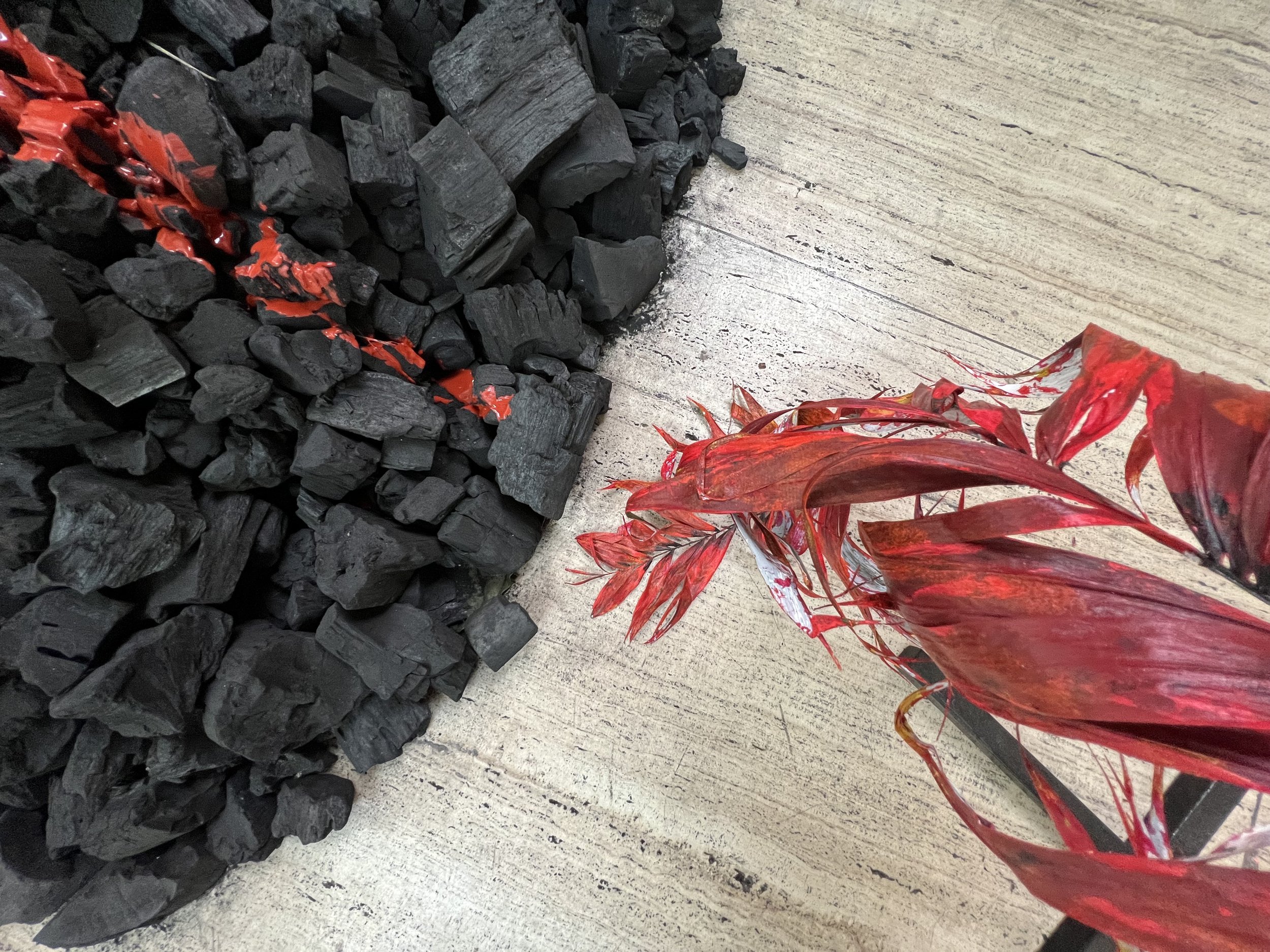

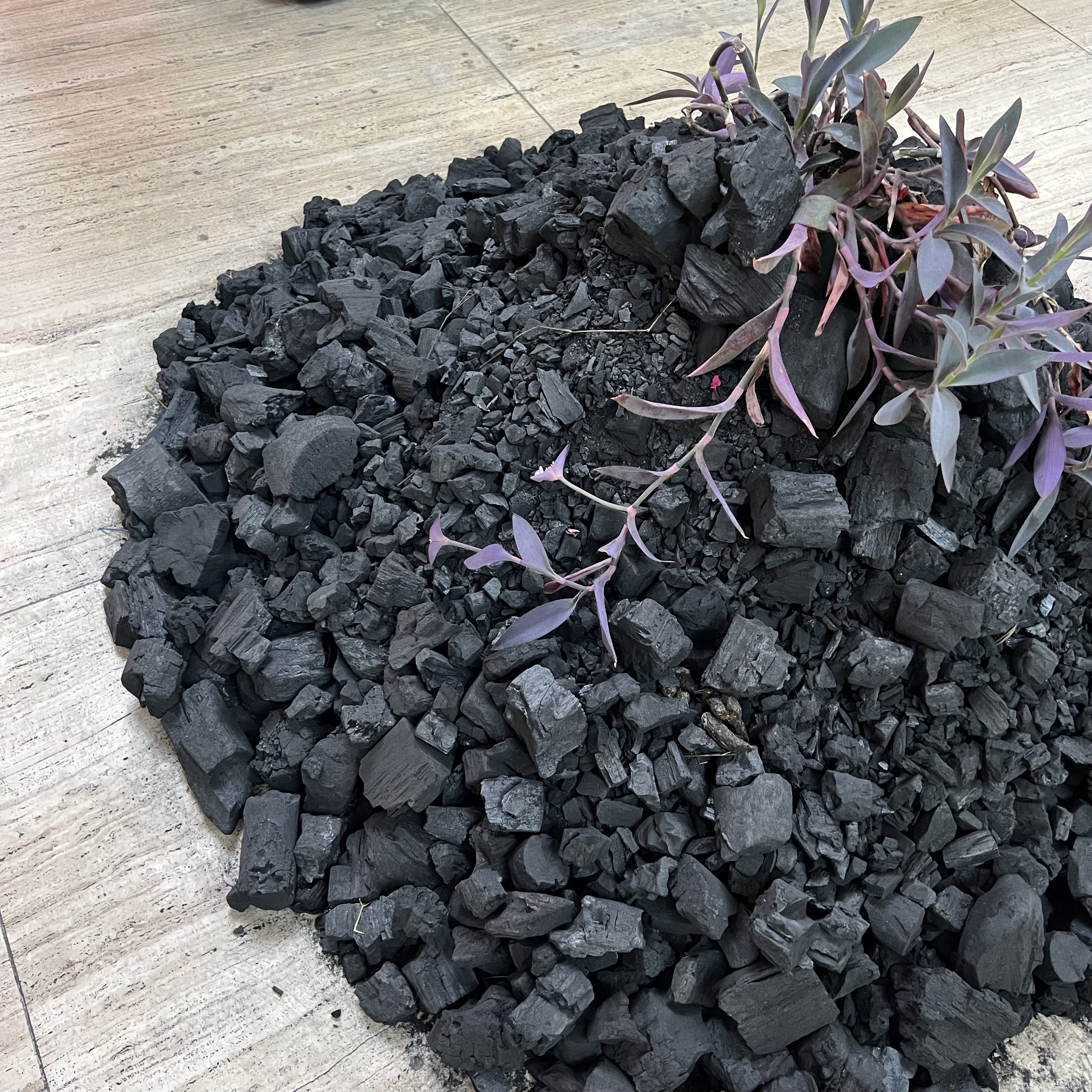
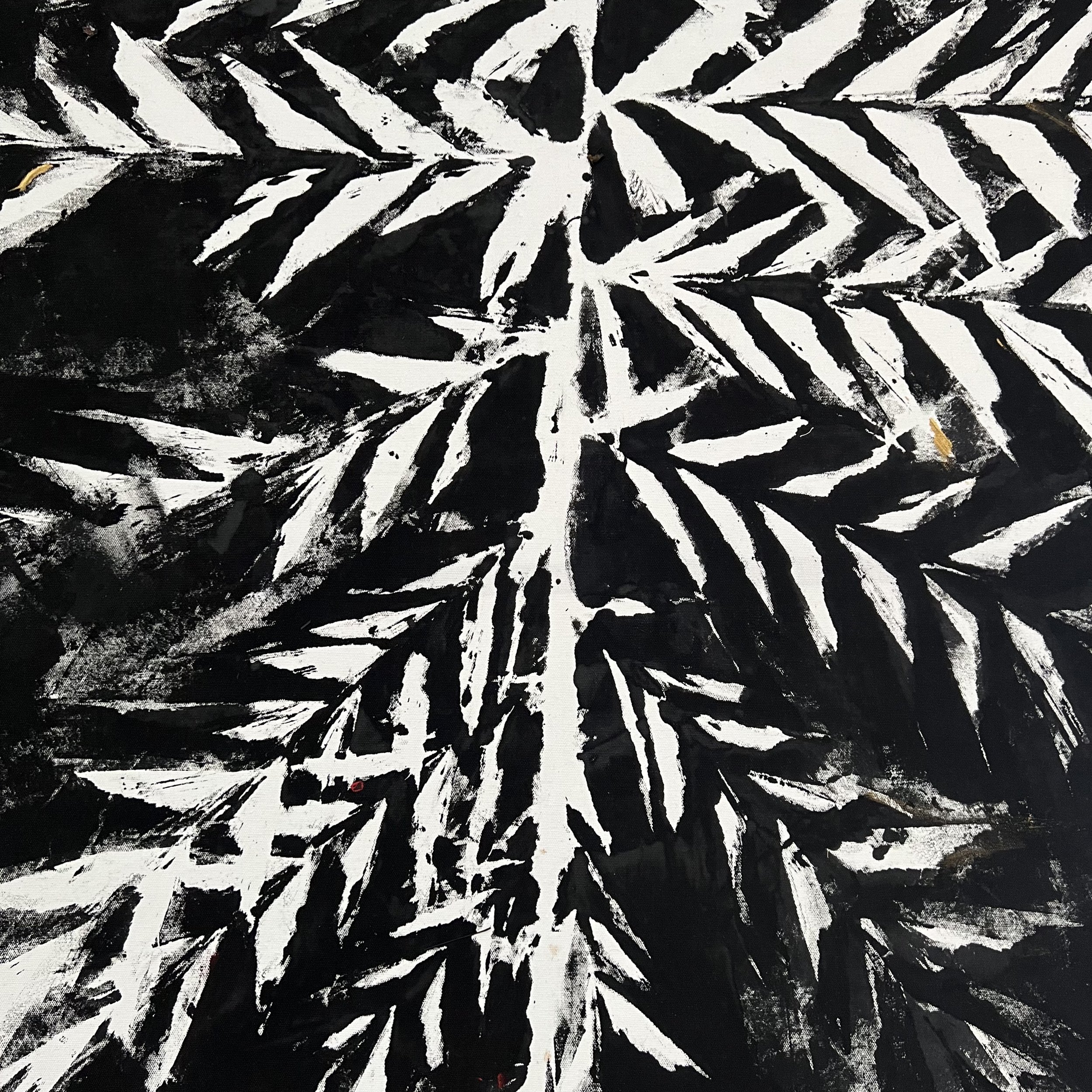
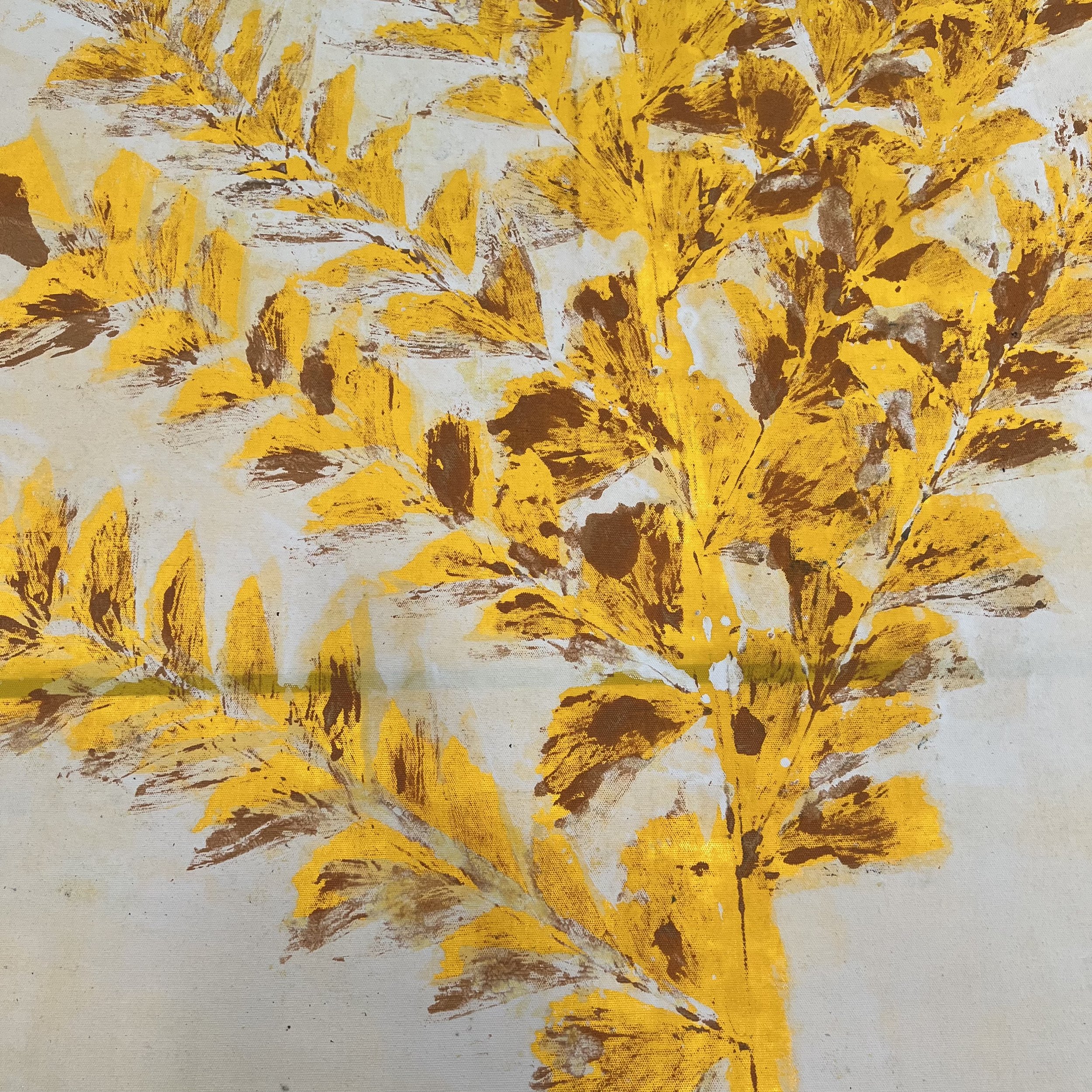

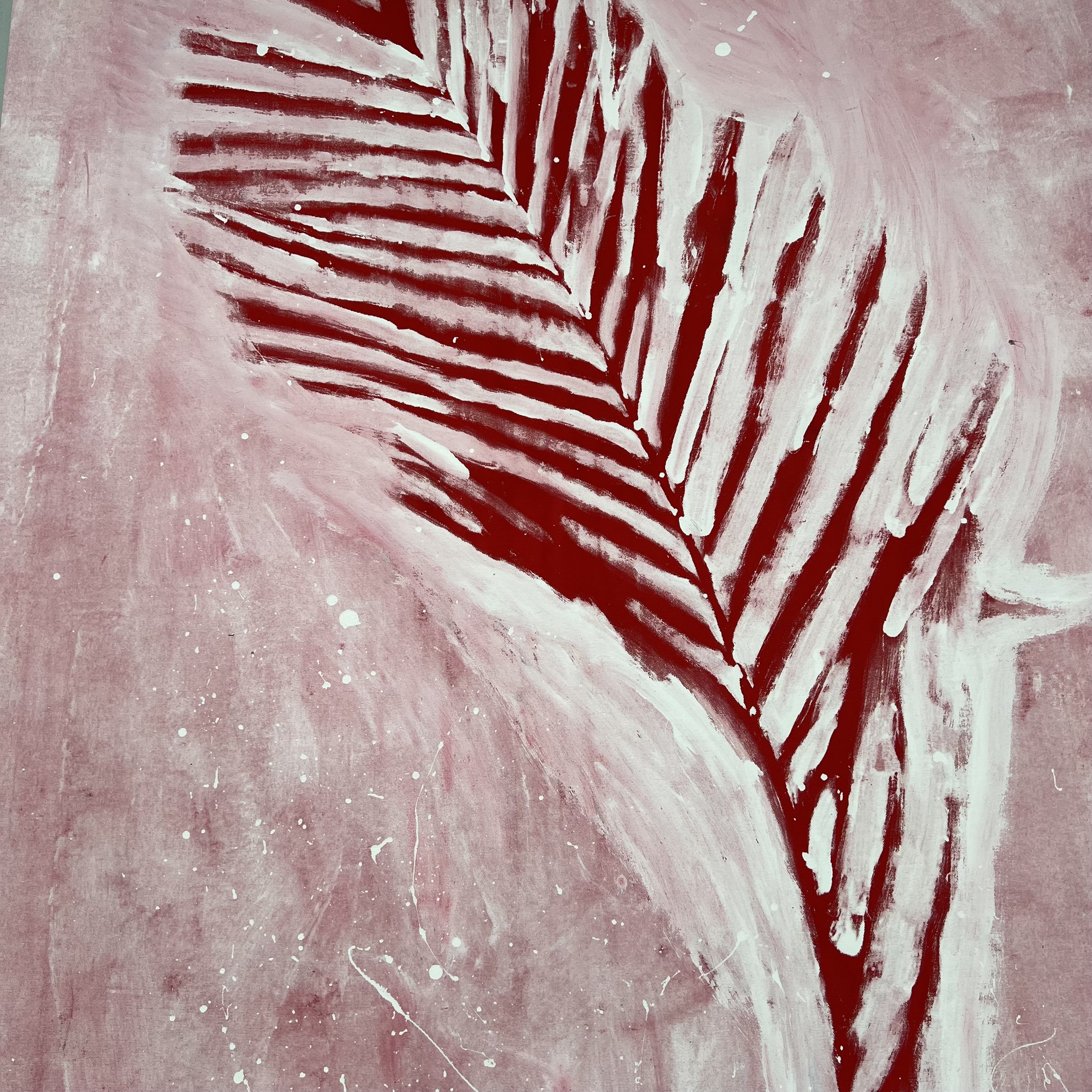
In the annals of art history, humanity's earliest artistic expressions emerged in caves, notably through negative and positive hand paintings found in sites like Chauvet and Lascaux approximately 40,000 years ago. These prehistoric artists maintained a profound bond with nature, viewing themselves not merely as separate entities but as integral parts of the natural world. Similarly, in the Philippines, indigenous knowledge concerning natural disasters and risk management is rooted in intuitive insights gleaned from observing the environment—the behavior of birds, animals, shifts in wind patterns, and celestial movements all serve as messages of impending weather changes, guiding human responses based on ancient wisdom derived from attuning to nature's cues.
For Dy, the act of creating artworks similarly becomes a form of communion with Nature. In his reflection and the quest to comprehend his purpose and message – encompassing pastoral, artistic, and social dimensions – Dy underscores the significance of altruism not solely as a Christian virtue but as an essential aspect of human existence. Through his artistic endeavors, he explores the interconnections of nature, spirituality, and human experience, emphasizing the inherent unity that binds them.
Within the mound of coal, which emphasizes mortality, lies the potential for regeneration and renewal through its capacity to fuel and ignite fire once again. Similarly, the palm branch, as it falls and decomposes, returns to the earth, becoming part of the cycle of life once more. These reflections prompt contemplation within the sacred confines of the church as a site. The Gesù, characterized by its imposing triangular structure, not only represents the Holy Trinity but also echoes the outstretched arms of the Sacred Heart and the traditional Filipino bahay kubo (nipa hut). This design imbues the church with a sense of sanctity and cultural resonance. Furthermore, there exists a social dimension to every pastoral mission, as Dy emphasizes: “When you look at the Christian dimension of emancipation as a social structure, it's evident that emancipation is fundamentally a nonviolent act. It offers a counter-narrative to a culture that often resorts to violence in response to injustice. Instead, it offers another perspective, a perspective rooted in the concept of greater loving and the sacrifice that is born out of love.”
In the course of writing this, during a sunny afternoon encounter, I had the privilege of conversing with Fr. Jason Dy, delving into his art, life, and mission. He recounts discovering his calling in Bukidnon, a place of profound significance for him, where he contemplated humanity's connection with nature through the observation of rice grains, and his retreats in the mountains. Dy also shares his experience of being captivated by the various hues of autumn leaves in Liverpool and how this influenced his artistic expression, prompting reflections on the elemental seasons and embracing the cyclical nature of life. He reveals that the sight of falling autumn leaves somehow prepared him for the unexpected passing of his father in 2014.
To the artist, the falling leaves of autumn and the bare branches of winter hold the promise of new buds blossoming in spring—a poetic representation of the paschal mystery. Can you cry over a dying leaf? The question provokes varied responses in individuals, but for Dy, the answer resounds with clarity: there is mortality, there is also eternity.

